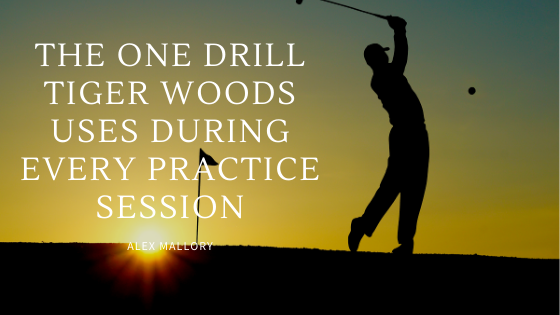Why should golfers take advice from Tiger Woods when it comes to pressure situations?
The better question would be, why not?
After all, he is a legend in the sport.
Woods holds numerous golf records and is tied for first place in PGA Tour wins.
His golf game has made him one of the most successful and popular golfers ever and an intricate part of that game is his play under pressure, particularly his new tee shot which he now uses to overcome tough situations on the golf course.
The Importance Of The Tee Shot
Why is the tee shot important?
Well, it is the first shot that starts every hole and so is critical for setting the pace for the entirety of holes played during an entire game.
Usually, the tee shot should go as far as possible so that the likelihood of taking fewer shots is increased, However, this does not have to be the case if a golfer has a good short game.
Having a good short game takes a lot of the pressure off of the tee shot but that still does not entirely eliminate the mental anxiety that many golfers feel as they start the game.
There is a phenomenon that all golfers face sooner or later called the TBP (tee box pressure). It commonly occurs during the tee shot, especially on the first hole, and has been attributed to the mental fear of failure.
Tiger Woods, who has had to go through multiple back surgeries during his career, has had to readjust his tee shot to overcome his physical limitations. His new tee shot adjustments can also be used to lessen TBP as well.
Tiger Woods’ Pressure Tee Shot
Woods’ uses his adjusted tee shot to make sure that he puts his ball in the fairway right from the start.
As he points out, he has had four back surgeries and will be eligible for the senior tour in six years.
In other words, he is old and injured.
These physical impairments also bring with them a host of mental impairments as the mind gets discouraged because the body will not do what the mind wants it to do.
To compensate for his weakening body, he came up with the following technique to assure that he puts himself in a good position from the start.
Tee Shot Technique
The Tiger Woods’ pressure tee shot is a slappy cut that is not intended to go far. It is used primarily to play it safe and reach short grass.
This technique should be used in the following situations:
- First Tee Shot
- Difficult Holes
- Roomy Fairways
- Achieving Par Five In Two
To perform the technique correctly, Woods focuses more on his shoulders than his feet. He keeps his shoulders open and facing the target while his feet remain pretty much square to the target.
The shoulders should end up a little left of the target sp that the ball banks to the right and the feet should be placed square to the target to take the pressure off of the back.
Doing so will allow the back to open up even more on the backswing.
It is also recommended to keep the clubface left of the target instead of square and open to it at address so the ball will not sail to the right of the intended destination.
The technique itself can be summed in six simple steps:
1)Keep the shoulders open.
2)Close the clubface.
3)Take the swing all the way back.
4)Keep the swing down the shoulder line.
5)Rotate through the downswing.
6)Don’t hold on the clubhead (release the clubhead) on the follow-through.
Golfers can also hit down on the ball a few degrees instead of hitting up on it to move the ball forward a bit more.
Conclusion
Even though the pressure tee shot is simple to perform, that does not mean that it is easy. It will take time to get the hang of it but once it becomes second nature, golfers will be able to split fairways with much more ease and with less pressure placed on both their body and minds.





